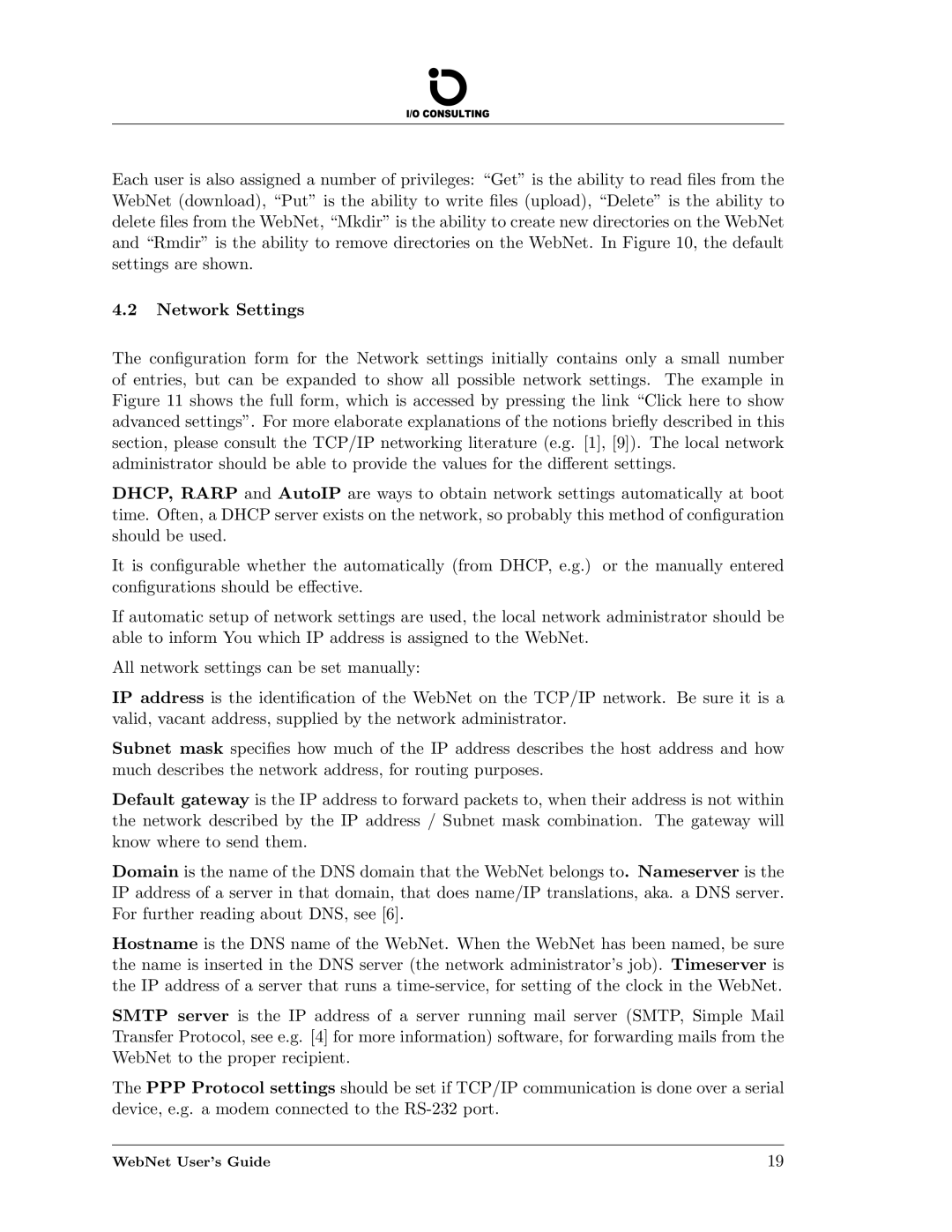
Each user is also assigned a number of privileges: “Get” is the ability to read files from the WebNet (download), “Put” is the ability to write files (upload), “Delete” is the ability to delete files from the WebNet, “Mkdir” is the ability to create new directories on the WebNet and “Rmdir” is the ability to remove directories on the WebNet. In Figure 10, the default settings are shown.
4.2Network Settings
The configuration form for the Network settings initially contains only a small number of entries, but can be expanded to show all possible network settings. The example in Figure 11 shows the full form, which is accessed by pressing the link “Click here to show advanced settings”. For more elaborate explanations of the notions briefly described in this section, please consult the TCP/IP networking literature (e.g. [1], [9]). The local network administrator should be able to provide the values for the different settings.
DHCP, RARP and AutoIP are ways to obtain network settings automatically at boot time. Often, a DHCP server exists on the network, so probably this method of configuration should be used.
It is configurable whether the automatically (from DHCP, e.g.) or the manually entered configurations should be effective.
If automatic setup of network settings are used, the local network administrator should be able to inform You which IP address is assigned to the WebNet.
All network settings can be set manually:
IP address is the identification of the WebNet on the TCP/IP network. Be sure it is a valid, vacant address, supplied by the network administrator.
Subnet mask specifies how much of the IP address describes the host address and how much describes the network address, for routing purposes.
Default gateway is the IP address to forward packets to, when their address is not within the network described by the IP address / Subnet mask combination. The gateway will know where to send them.
Domain is the name of the DNS domain that the WebNet belongs to. Nameserver is the IP address of a server in that domain, that does name/IP translations, aka. a DNS server. For further reading about DNS, see [6].
Hostname is the DNS name of the WebNet. When the WebNet has been named, be sure the name is inserted in the DNS server (the network administrator’s job). Timeserver is the IP address of a server that runs a
SMTP server is the IP address of a server running mail server (SMTP, Simple Mail Transfer Protocol, see e.g. [4] for more information) software, for forwarding mails from the WebNet to the proper recipient.
The PPP Protocol settings should be set if TCP/IP communication is done over a serial device, e.g. a modem connected to the
WebNet User’s Guide | 19 |
